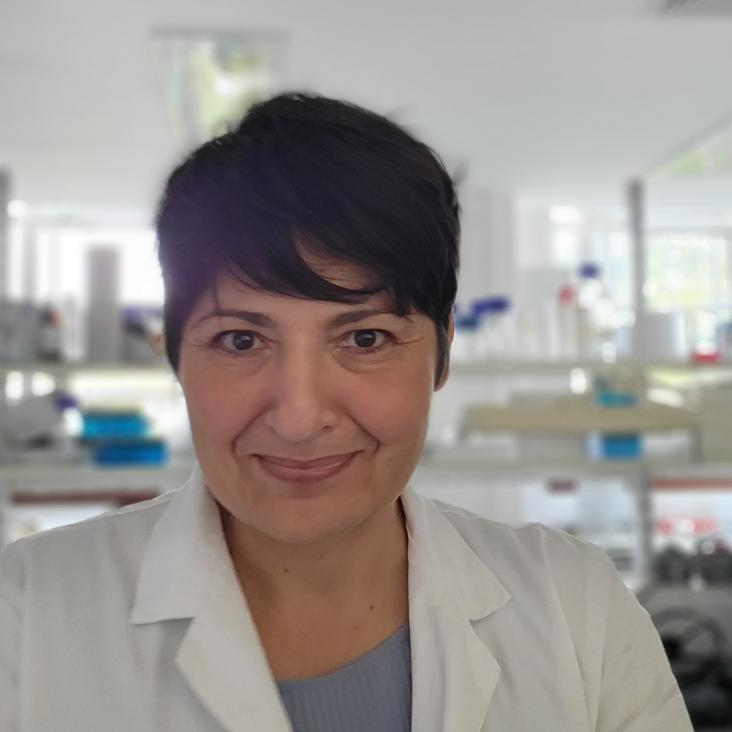Conditional generative AI for high-fidelity synthesis of hydrating cementitious microstructures
Materials & Design Elsevier BV 256 (2025) 114251
Viscoelastic time responses of polymeric cell substrates measured continuously from 0.1–5000 Hz in liquid by photothermal AFM nanorheology
Nanoscale Royal Society of Chemistry (2025)
Abstract:
The mechanical properties of the polymeric substrate or matrix where a cell grows affect cell behavior. Most studies have focused on relating elastic properties of polymeric substrates, which are time-independent, to cell behaviors. However, polymeric substrates and biological systems exhibit a time-dependent, often viscoelastic, mechanical response. While less is known about how time responses dictate cell behavior, cells are likely sensitive to substrate time responses rather than elasticity alone. However, testing this hypothesis is complex due to the lack of nanoscale tools. To overcome this limitation, photothermal actuation-atomic force microscopy nanoscale dynamic mechanical analysis (PT-AFM nDMA), a novel AFM technique that measures sample viscoelasticity over a broad and continuous frequency range, was applied to measure the viscoelastic properties of cell culture substrates made of poly(2-hydroxyethyl methacrylate) (poly(HEMA)) and collagen I (pureCol) in liquid at frequencies ranging continuously from 0.1 Hz–5000 Hz. PT-AFM nDMA to date has not been performed in liquid, but successfully and accurately characterized substrate viscoelasticity and synergized with measurements obtained using a more established AFM technique, bimodal imaging. The results of this study demonstrate that PT-AFM nDMA can be performed in liquid environments, especially relevant to biological samples. Additionally, comparing PT-AFM nDMA measurements of the poly(HEMA) and pureCol substrates in this study to cell behaviors described in the scientific literature on similar substrates suggests that longer substrate time responses at low measurement frequencies promote cell attachment, proliferation, and migration, while shorter substrate time responses promote ECM remodeling and differentiation.Temporal evolution of mechanical properties in PDMS: A comparative study of elastic modulus and relaxation time for storage in air and aqueous environment
Journal of the Mechanical Behavior of Biomedical Materials Elsevier 160 (2024) 106779
Abstract:
Polydimethylsiloxane (PDMS) is a soft, biocompatible polymer extensively employed in biomedical research, notable for its tunable mechanical properties achieved through cross-linking. While many studies have assessed the mechanical properties of PDMS utilizing macroscopic and microscopic methods, these analyses are often limited to freshly prepared samples. However, the mechanical properties of PDMS can be expected to change during prolonged exposure to water or air, such as interface polymer chain loosening or surface hardening, which are critical considerations in applications like cell culture platforms or microfluidic devices. This paper presents a comprehensive 10-day investigation of the evolution of PDMS surface mechanical properties through AFM-based nano-indentation. We focused on the most commonly utilized crosslinker-to-base ratios of PDMS, 1:10 (r10) and 1:20 (r20), under conditions of air and deionized water storage. For r10 samples, a hardening process was detected, peaking at 2.12 ± 0.35 MPa within five days for those stored in air and 1.71 ± 0.16 MPa by the third day for those immersed in water. During indentation, the samples displayed multiple contact points, suggesting the formation of distinct regions with varying mechanical properties. In contrast, r20 samples exhibited better stability, with an observed elastic modulus averaging 0.62 ± 0.06 MPa for air-stored and 0.74 ± 0.06 MPa for water-stored samples. Relaxation experiments, interpreted via the General Maxwell Model featuring two distinct component responses, a relatively consistent fast response τ1 (on the order of 10−1 s), and a more variable, slower response τ2 (on the order of 10 s), throughout the study period. The identification of two distinct relaxation times suggests the involvement of two disparate material property regimes in the relaxation process, implying changes in the surface material composition at the interface with air/water. These variations in mechanical properties could significantly influence the long-term functionality of PDMS in various biomedical applications.Enhancing nanoscale viscoelasticity characterization in bimodal atomic force microscopy †
Soft Matter Royal Society of Chemistry (2024)
Abstract:
Polymeric, soft, and biological materials exhibit viscoelasticity, which is a time dependent mechanical response to deformation. Material viscoelasticity emerges from the movement of a material's constituent molecules at the nano- and microscale in response to applied deformation. Therefore, viscoelastic properties depend on the speed at which a material is deformed. Recent technological advances, especially in atomic force microscopy (AFM), have provided tools to measure and map material viscoelasticity with nanoscale resolution. However, to obtain additional information about the viscoelastic behavior of a material from such measurements, theoretical grounding during data analysis is required. For example, commercially available bimodal AFM imaging maps two different viscoelastic properties of a sample, the storage modulus, E′, and loss tangent, tan δ, with each property being measured by a different resonance frequency of the AFM cantilever. While such techniques provide high resolution maps of E′ and tan δ, the different measurement frequencies make it difficult to calculate key viscoelastic properties of the sample such as: the model of viscoelasticity that describes the sample, the loss modulus, E′′, at either frequency, elasticity E, viscosity η, and characteristic response times τ. To overcome this difficulty, we present a new data analysis procedure derived from linear viscoelasticity theory. This procedure is applied and validated by performing amplitude modulation–frequency modulation (AM–FM) AFM, a commercially available bimodal imaging technique, on a styrene–butadiene rubber (SBR) with known mechanical behavior. The new analysis procedure correctly identified the type of viscoelasticity exhibited by the SBR and accurately calculated SBR E, η, and τ, providing a useful means of enhancing the amount of information gained about a sample's nanoscale viscoelastic properties from bimodal AFM measurements. Additionally, being derived from fundamental models of linear viscoelasticity, the procedure can be employed for any technique where different viscoelastic properties are measured at different and discrete frequencies with applied deformations in the linear viscoelastic regime of a sample.Hierarchical Self‐Assembly of Water‐Soluble Fullerene Derivatives into Supramolecular Hydrogels
Small Wiley (2024) 2401963



